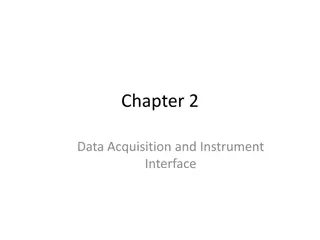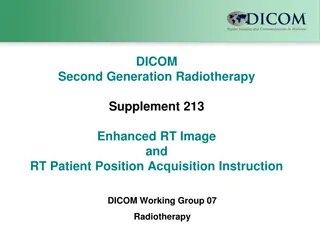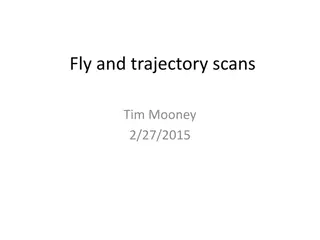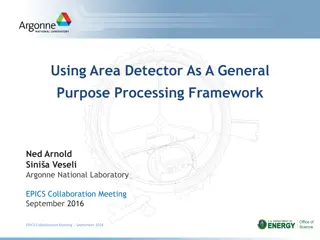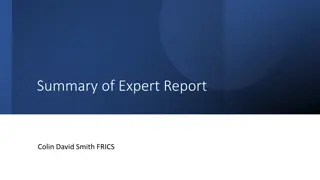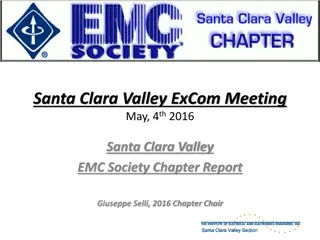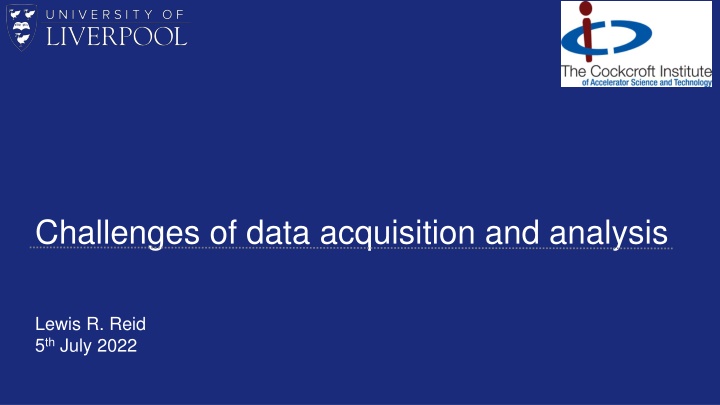
Data Acquisition and Analysis Challenges in Experimental Research
Explore the challenges faced in data acquisition and analysis, including issues with camera image realignment and the structure of data acquisition. Discover the importance of proper planning for future experiments and diagnostic considerations.
Download Presentation

Please find below an Image/Link to download the presentation.
The content on the website is provided AS IS for your information and personal use only. It may not be sold, licensed, or shared on other websites without obtaining consent from the author. If you encounter any issues during the download, it is possible that the publisher has removed the file from their server.
You are allowed to download the files provided on this website for personal or commercial use, subject to the condition that they are used lawfully. All files are the property of their respective owners.
The content on the website is provided AS IS for your information and personal use only. It may not be sold, licensed, or shared on other websites without obtaining consent from the author.
E N D
Presentation Transcript
Challenges of data acquisition and analysis Lewis R. Reid 5th July 2022
Re-alignment of Coffin camera images Initial analysis showed that we can t assume that the image numbers on the plasma glow and electron spectrometer cameras can be trusted. i.e. for a given run, the ithspectrum image doesn t always correspond to the ith glow image. Images should be spaced by 100 ms but a range of 10-300 ms has been observed. This is important as the plasma glow camera is how we determine whether the gas jet fired or not. Top image: Plot of difference in camera timestamps for 600 consecutive images for each of the two cameras individually. Majority of shots have close to image every 100 ms but some outliers cause problems. Bottom image: Plot of difference between time stamps on corresponding plasma glow and espec camera images. Images for aligned for ~80 shots then are no longer in synchronisation. gas on and gas off images are mislabelled from this point onwards. 2
Re-alignment of Coffin camera images The shots are realigned using the timestamps on the camera images themselves but very strict limits have to be placed on this. I call shots aligned when the timestamps are within 10 ms much shorter than the 100 ms spacing between shots. This process works however it is not perfect: Around 3% of shots are discarded. There is occasional instances of two images being captured within a few ms one electron spectra image will have two suitable candidates for the glow image. The number of images discarded is acceptable with two diagnostics but more complex, future, experiments could result in a large proportion of the data to be castaway when this issue starts to compound. After image realignment 3
Re-alignment of Coffin camera images After image realignment After image realignment 4
Structure of data acquisition Lack of experience and time in the control room pre- experiment meant that no code was prepared ahead of the exploitation time All data was saved by date with files for a given day in a single directory Detailed notes had to be taken throughout the experiment to keep track of the files and the file names. For future campaigns, we would aim to work on data acquisition sooner in the planning process and would want to test acquisition We would want to build the directory structure into the acquisition for easier tracking of files and simplifying analysis. This is inline with the open research framework and may be necessary as open data sets become more fashionable - The structure of how the data is saved will be important for this to be understandable for others. 5
Diagnostics for future campaign As an example what we may want to do in the future, we have considered the on-shot diagnostics that we would like to install for a follow up experiment: Electron beam spectrum Electron beam charge Laser beam energy Laser beam spectrum Laser beam pointing / jitter Laser time of arrival Electron beam time of arrival Plasma density (transverse laser probe) Plasma glow Betatron x-ray spectrum In an ideal world, the data acquisition system should be able to would be able to save these with confidence in the synchronisation between all the files. Organising this volume of data would require a great deal of thought. 6
Conclusions Data synchronisation and timestamping will be critical in the future especially as number of diagnostics and complexity increases. The network infrastructure may be something we need to look at to support this. Designing the DAQ system to be ready for future experimental campaigns is something that can only be achieved if facility scientists and users work collaboratively. Planning for data acquisition and structure of how it is saved is critical for experiments. In future, we would place equal emphasis on this as the physics we are investigating. Open data and open datasets are coming, planning and preparing now may save a lot of problems in the future. 7

